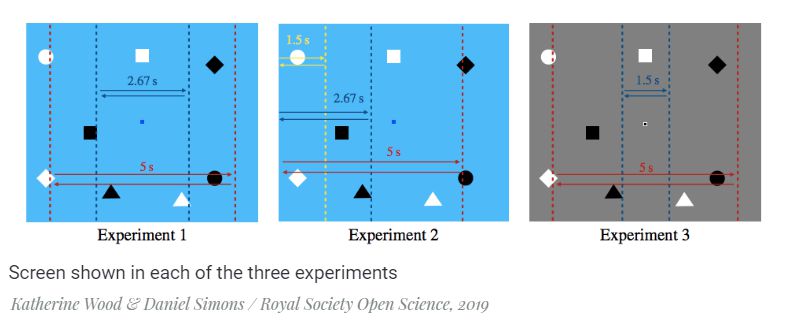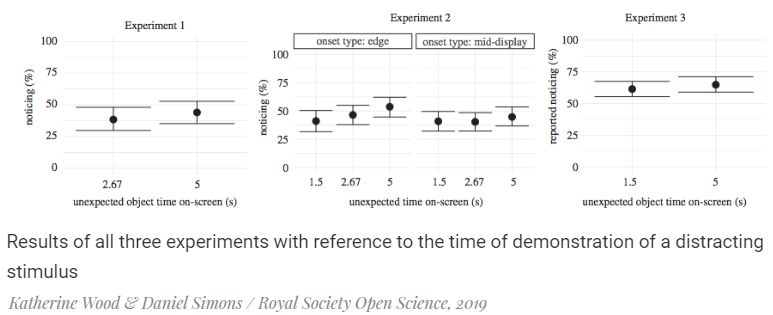A team of scientists have found that inattentive blindness or inattention blindness (inability to notice an object if attention is occupied by other tasks) is limited in time: if an object is not noticed within one and a half seconds, then it will not be noticed further. The time window in which a new object can attract attention when other tasks are loaded with work memory, therefore, does not depend on how much time the stimulus is present.
In the working memory, objects are simultaneously involved that get there from short-term and long-term memory, because of which its size can be very limited. In other words, when the processes involved in attention work, efficiency is determined exactly by what attention is paid to and what is important for its work. Otherwise, inhibitory mechanisms are triggered, for example, the blindness of inattention – the inability to pay attention to a side stimulus that suddenly appears in the field of vision.
Perhaps the most famous demonstration of blindness if inattention is a series of experiments with a gorilla, for which in 2004 Harvard psychologists Daniel Simons and Christopher Chabris received the Ig Nobel Prize.
In his new work, Daniel Simons and his colleagues from the University of Illinois at Urbana-Champaign decided to test whether it is possible to limit blindness of inattention in time – that is how many seconds after the presentation of an irrelevant stimulus it will no longer be possible to detect.
To do this, they conducted three experiments, in which a total of more than 1,500 people took part. In each experiment, participants were shown a field with geometric shapes of different colours moving on it: the task of the participants was to count these figures. At some point on the screen appeared another, distracting figure, which did not belong to the experiment. At the end of each attempt, participants were asked if they had noticed a new shape – and, if so, what it looked like and where it appeared.

In the first experiment, the new shape was on the screen 2.67 and 5 seconds after starting in different places around the fixation in the centre of the screen, in the second experiment the figure was also shown for 1.5 seconds, and in the third experiment it was important what exactly the figure looked like – more specifically, in what colour it was painted.
In all three experiments, the increase in the time in which the figure was on the screen did not affect whether the participants would notice. In most cases, the appearance of a new figure was reported by participants who showed it earlier (or rather in 1.5 seconds), except for the only case in the second experiment, when the figure appeared in the middle of the screen: then it was easier (but slightly – just over 12%) to detect in 2.67 seconds, not after 1.5.

The authors, therefore, concluded that the time window into which a foreign object can grab attention when the working memory is busy is very small and does not depend on how long the object itself is in the field of view. In other words, if an extraneous object did not attract a person’s attention immediately (specifically here – within the first one and a half seconds), then to show it further, apparently, is already pointless.
